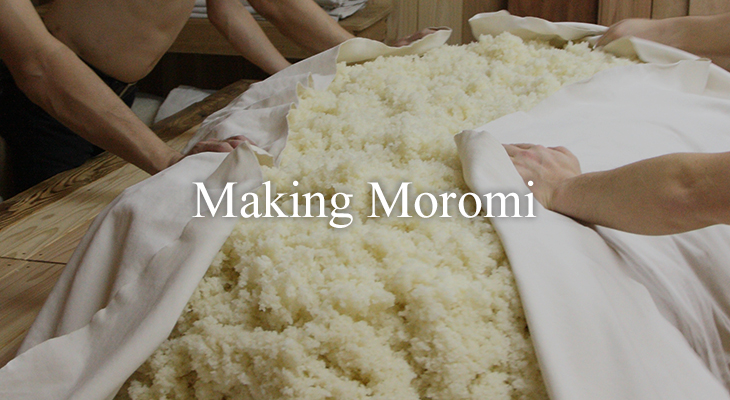
Polishing and steaming the rice
The first step in making moromi (SAKE) is to polish the rice. After polishing, the rice is washed, soaked in water overnight, and finally steamed in a large steamer for about 60 minutes. The rice polishing process yields a ratio of around 83% on average. We do not polish the rice as much as other, ordinary, SAKE producers. By doing so, we leave a higher level of protein in the rice, giving a more flavorful, tasty vinegar. Nowadays, many SAKE breweries outsource rice polishing, but we want to monitor all stages of production to ensure quality. We polish the rice carefully according to rice type in our own brewery. Utilizing this thorough, in-house operation allows us to avoid any rice from other companies, which may contain pesticides, from mixing with ours in the polishing machine.
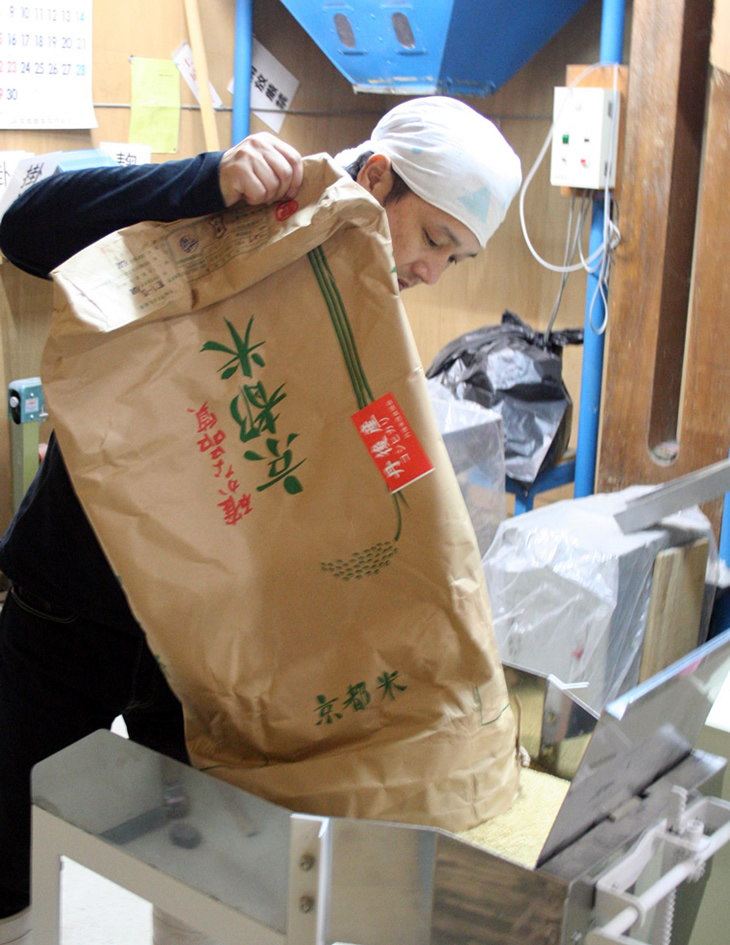
Rice is milled using our own rice polishing machine.
Making rice malt
The steamed rice is then cooled to 40°C. The grains of rice are evenly coated with mold bacteria, and then moved to the mold chamber to allow this mold bacteria to grow. The mold chamber is kept hot and humid, with a temperature under 29℃ and 70% humidity. It takes two whole days to make rice malt. We achieve this by repeatedly breaking up the hardened rice grains by hand. The finished rice malt is then spread out on a linen cloth and allowed to cool to room temperature. Making good rice malt is the key to making good moromi (SAKE), which is a crucial factor in making tasty vinegar.
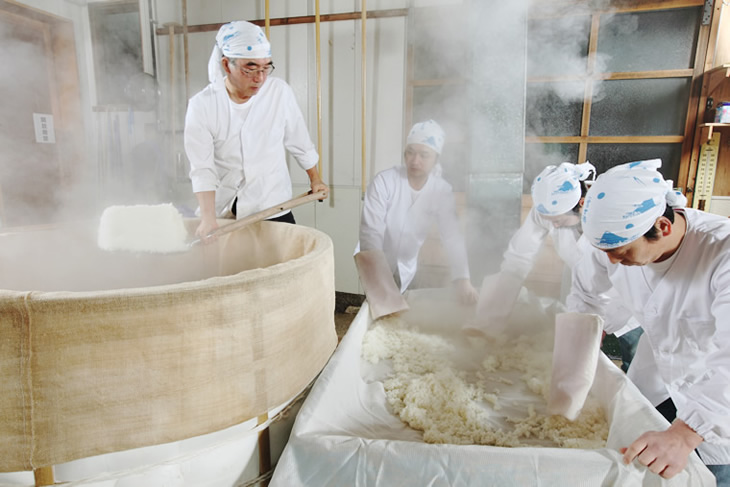
The acetic acid bacteria film turns alcohol into vinegar.
Making shubo (yeast starter)
Once the rice malt is made, we start making shubo. We put water and rice malt in a small tank, and add yeast for sake brewing. We then add steamed rice and stir and stir the mixture until the shubo is complete. Shubo is kept at a temperature between 7°C and 20°C for about two weeks. We use a complex and detailed temperature control method to maintain these conditions. This strict temperature control is the key to increasing the volume of active yeast.
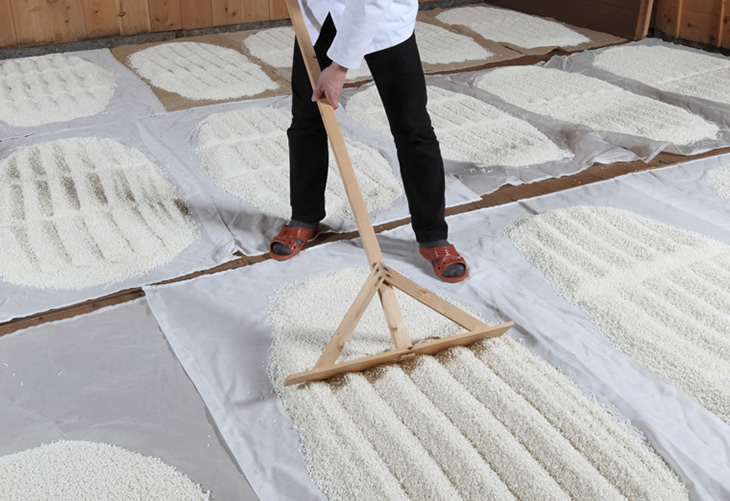
Finished rice malt is spread and cooled down.
Making moromi (SAKE)
Once the shubo is ready, we move it to a large tank to begin the process of making moromi (SAKE). Water, rice malt, and steamed rice are added to the tank in that order. However, since adding too much at once weakens the fermentation process, the process is divided into three stages. We call this three-stage brewing. Fermentation begins two days after the first infusion, and it takes about 30 days for moromi (SAKE) to mature. During this time, our master brewer works tirelessly, even late at night, to check the progress of the fermentation process and stir with a large oar. The resulting moromi (SAKE) is called sumoto-moromi. It contains plenty of amino acids and has a rich, sweet taste. This flavor later develops into delicious vinegar.
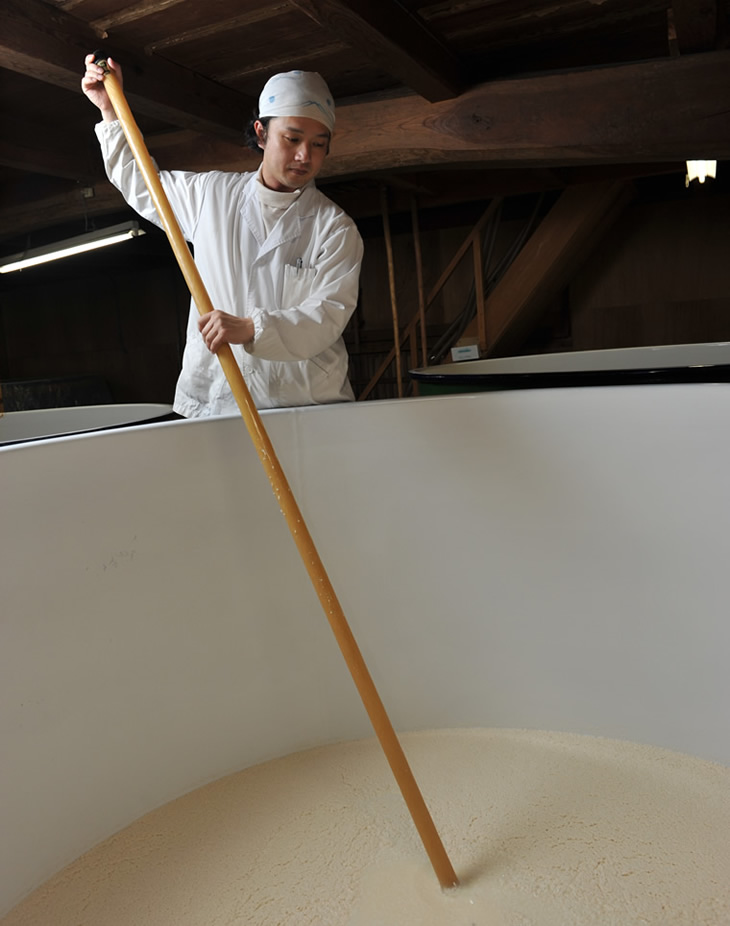
Stirring with an oar

Rice is milled using our own rice polishing machine.

We spread out the steamed rice and cover it with mold bacteria.

Finished rice malt is spread and cooled down.

Stirring with an oar
![[Fujisu-Vinegar] Iio-jozo, the Japanese Vinegar Brewery](/images/page/common/spacer.gif)
![[Fujisu-Vinegar] Iio-jozo, the Japanese Vinegar Brewery](/en/images/page/common/logo.png)




